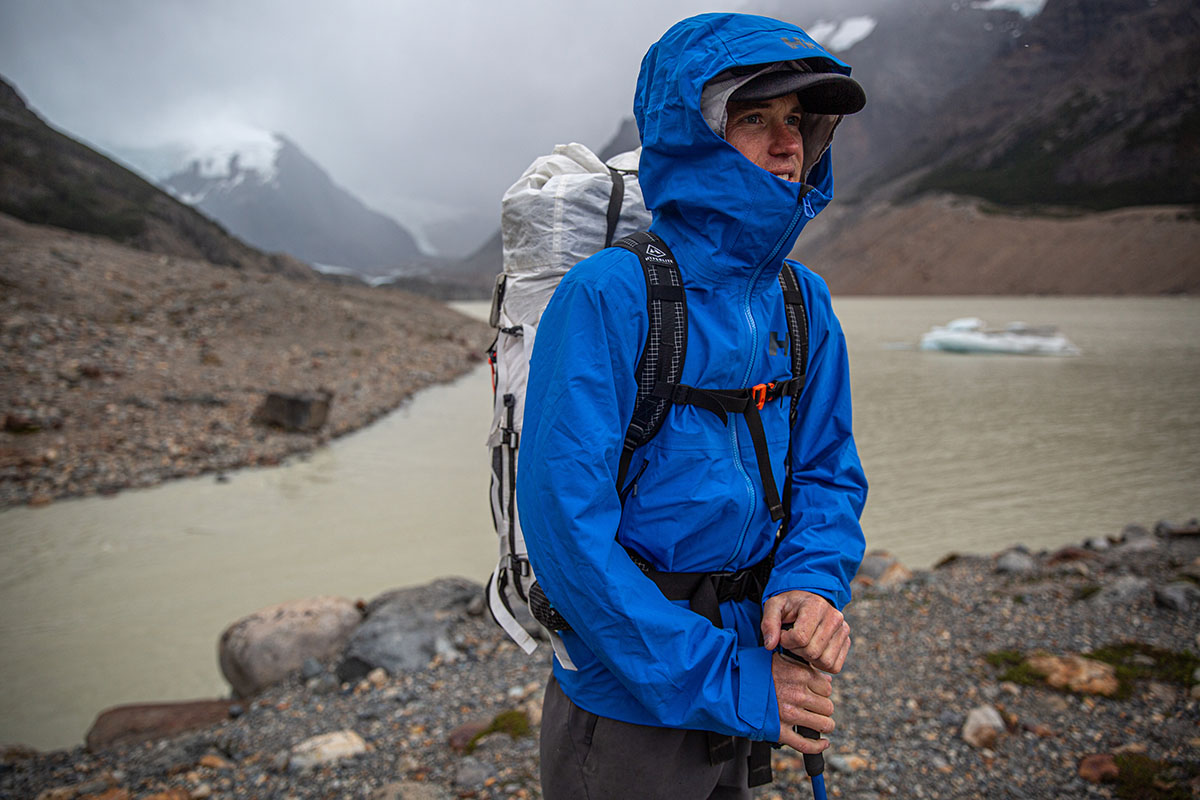
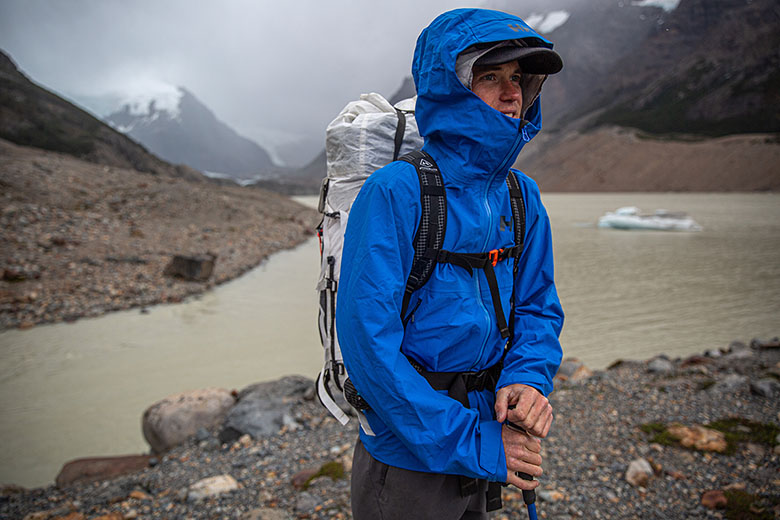
Price: $375
Weight: 1 lb. 3.4 oz. (men’s)
Waterproofing: 3L Helly Tech Performance
What we like: Solid comfort and well built for year-round backcountry use.
What we don’t: Less reliable than Gore-Tex designs in heavy moisture, limited breathability, and heavier than many similarly equipped hardshells.
See the Men's Helly Hansen Blaze See the Women's Helly Hansen Blaze
Helly Hansen's Blaze 3 Layer lands in the mid-range of the brand's surprisingly extensive hardshell lineup. At $375, it undercuts similarly built alternatives from Arc'teryx, Rab, or Norrøna while stacking up favorably in comfort and durability. That said, we did come away slightly underwhelmed by protection and breathability—it was quicker to wet out and faster to heat up than pricier (often Gore-Tex) competitors. It’s also on the heavier and bulkier end—a limiting factor for fast-and-light adventures—although overall build quality is up to par. Below we detail our experiences with the Blaze. To see how it stacks up to the competition, check out our article on the best hardshell jackets.
Coming from premium Gore-Tex shells, I was a little disappointed by the Helly Hansen Blaze 3 Layer Jacket’s wet-weather performance. For waterproofing, the jacket utilizes the brand’s mid-range Helly Tech Performance membrane along with fully sealed seams and a durable water repellent (DWR) coating to help moisture bead up and roll off the exterior. In practice, the jacket did an adequate job of keeping light moisture and snow at bay but wet out quickly in heavy and sustained rainfall while backpacking in Patagonia. For reference, I was also testing the brand’s Odin 9 Worlds 3.0 Shell Jacket on the trip, which uses the brand’s upgraded Helly Tech Professional membrane and offered much better reliability in the unrelenting conditions—I had no issues with moisture penetrating the outer shell, and the thicker fabric was noticeably better at blocking strong gusts.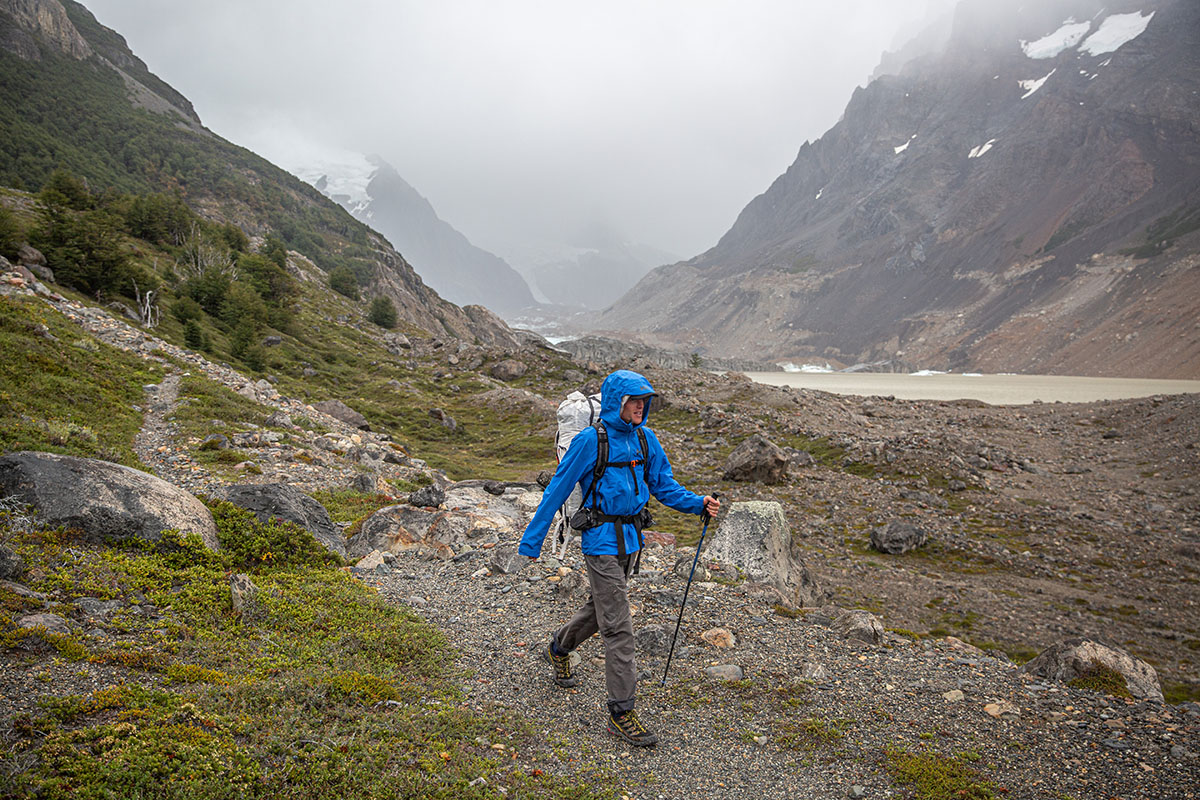
On the bright side, Helly Hansen did equip the Blaze with many of the protective features we look for in a mountain-ready hardshell. These include an adjustable and helmet-compatible hood, Velcro-equipped cuffs that pair well with either undercuff or gauntlet-style gloves, a water-resistant main zipper, and a drawcord-equipped hem. The hand pockets are also positioned high enough to clear a backpack hipbelt or climbing harness, which is great for warming cold hands when on the move. Again, the proprietary waterproof membrane isn’t quite up to Gore-Tex standards and strikes me as underbuilt for true alpine conditions—disappointing considering its relatively high weight (more on this below)—but the Blaze is perfectly serviceable for uses like shoulder-season backpacking and short winter tours or trips into the sidecountry.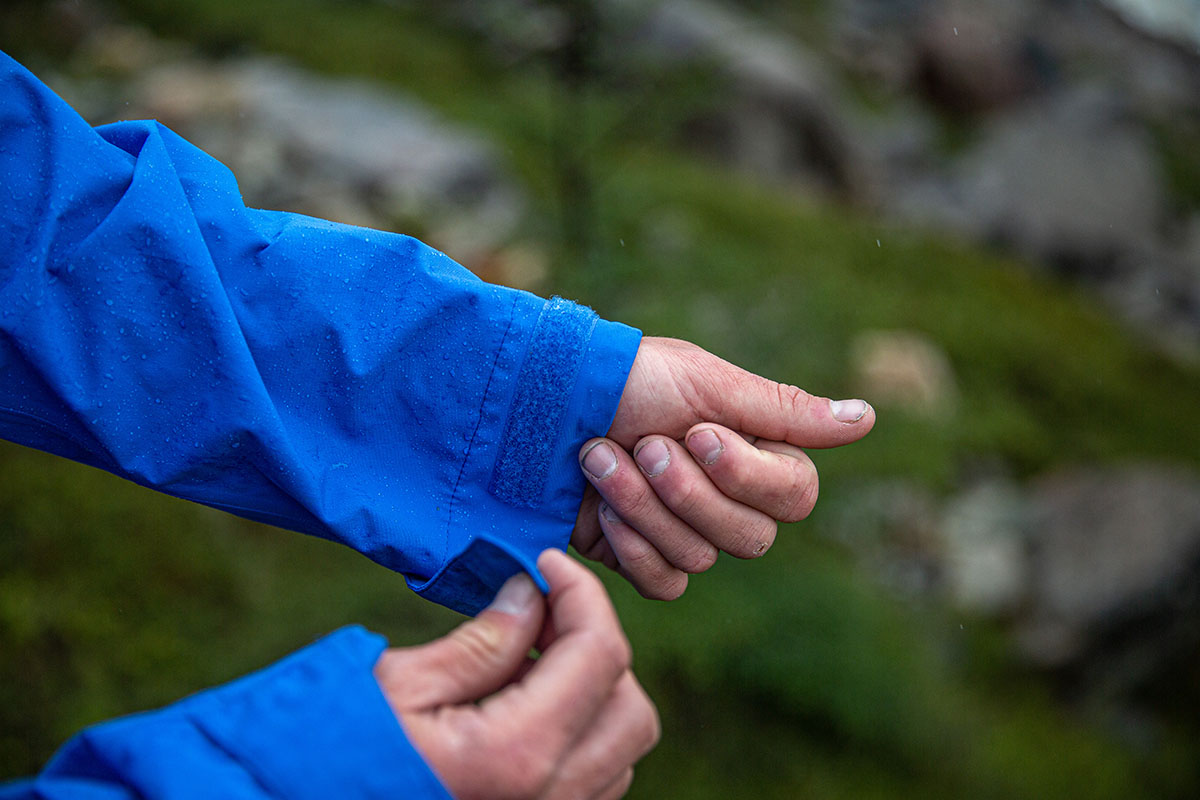
Unfortunately, the Blaze doesn’t stand out from a breathability standpoint, either. Despite temperatures being very mild in Patagonia (hovering in the high 30s to low 50s Fahrenheit during our trek), I was quick to overheat in the jacket. Helly Hansen did include generously sized pit zips for dumping excess heat, but the interior still grew noticeably clammy during activity, even with minimal layering underneath. In my experience, Gore-Tex alternatives like Arc’teryx’s Beta LT Jacket or Norrøna’s Falketind GTX offer a noticeable boost in breathability for hiking and backpacking in mild temperatures. But for high elevations, short backcountry tours, or sidecountry hikes in the winter, the Blaze will get the job done for less.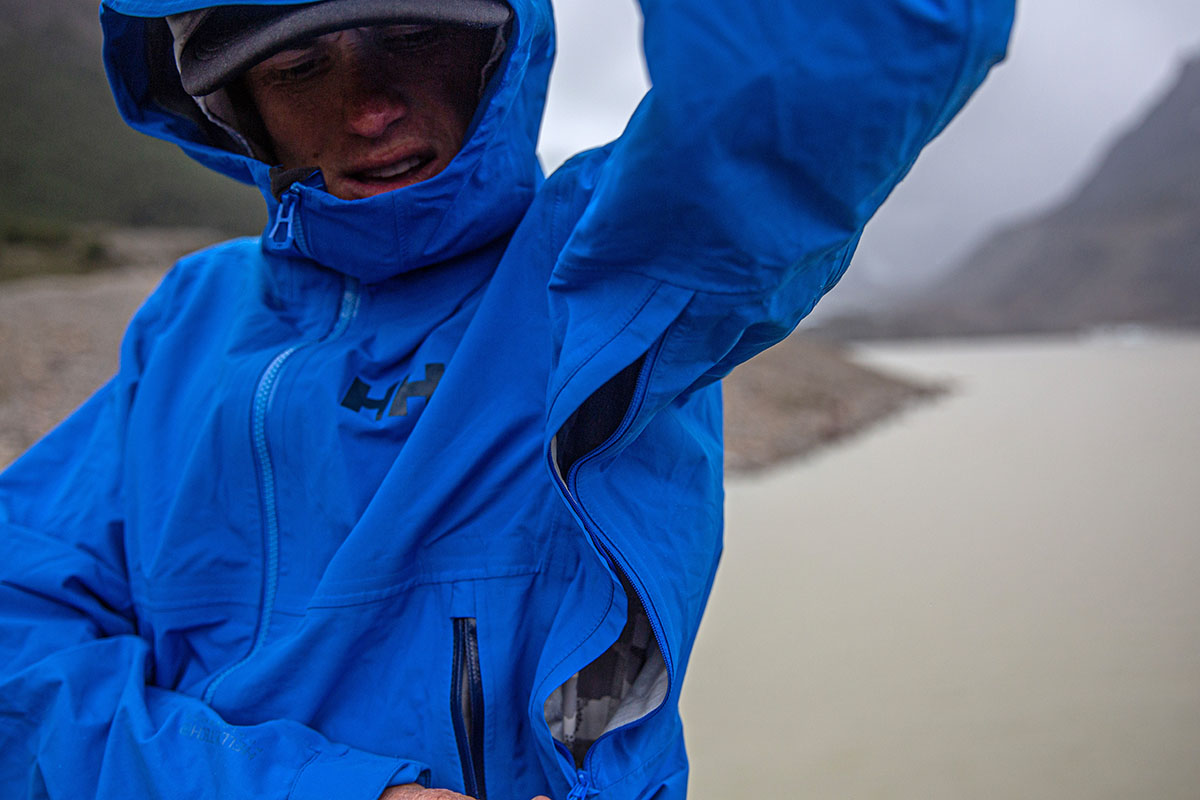
Coming from the brand’s stiff and burly Odin 9 Worlds 3.0 Jacket, the Blaze was a noticeable step up in all-around comfort. The polyester lining has a fairly smooth and supple feel that slides easily over baselayers, there’s a brushed tricot chin guard for minimizing chafing, and the exterior is decently soft for a hardshell. Additionally, sizing up meant that I had ample mobility to move around freely (more in “Fit and Sizing” below), and the cut was long enough that the jacket didn’t ride up underneath my pack’s hipbelt. It’s worth noting that stretch-infused designs like the Fjallraven Keb Eco-Shell and Rab Kinetic Alpine 2.0 offer a step up in comfort and mobility, but the Blaze is a strong performer in the wider hardshell market. 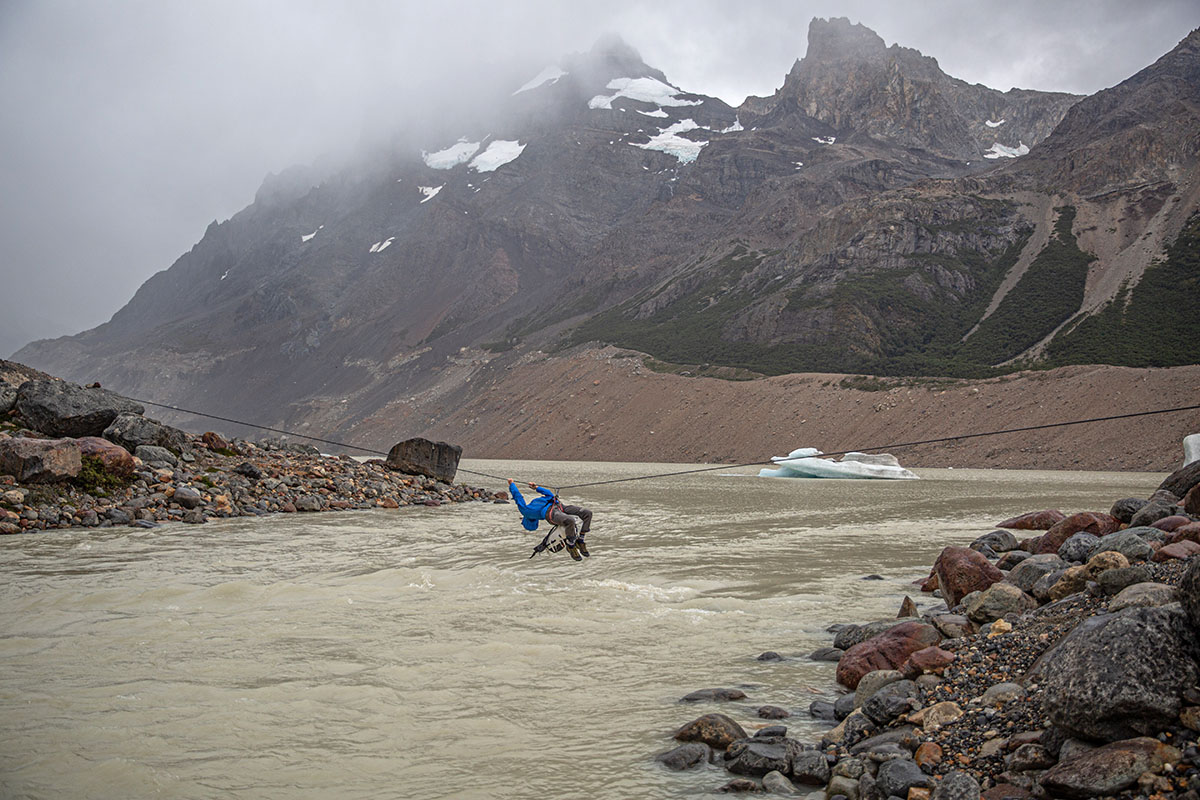
Helly Hansen is a higher-end brand with a good track record of durability, and the Blaze 3 Layer Jacket largely sticks to that formula. While relatively minimalist, the jacket has a trustworthy feel and performed well throughout testing with no snags or tears. Helly Hansen unfortunately doesn’t provide a denier (D) spec for the Blaze to denote fabric thickness, and we weren’t able to attain one from their customer service team, but I’d estimate it’s somewhere around 40 to 50D—noticeably thinner than the brand’s 70D Odin 9 Worlds 3.0 that I tested recently but plenty hardwearing for most backcountry uses. And all of the smaller components have a similarly dependable feel, from the easy-to-operate hood and hem drawcords to the large and glove-friendly zipper pulls. 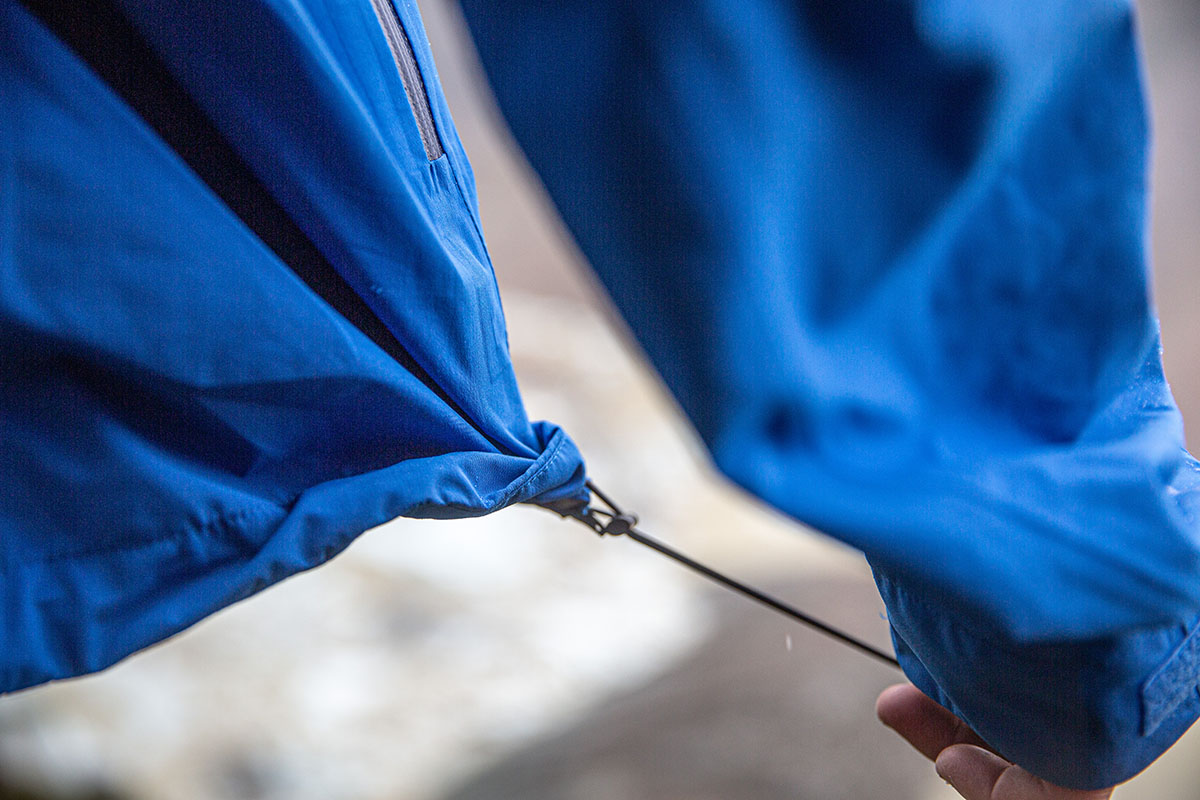
That said, despite being relatively comfortable and durable, the Blaze lacks the high-end feel of many competitors in its price range. The exterior is noticeably less sleek and polished than what you get from brands like Arc’teryx, Norrøna, or Patagonia, and not everyone will love the loud branding (the HH logo is displayed prominently on both the hood and chest). I also had issues with the main zipper getting stuck at the top frequently, which isn’t uncommon among water-resistant designs but nevertheless required additional time and effort to resolve. To be fair, the Blaze does undercut premium competitors like the aforementioned Beta LT ($450) and Patagonia’s ski-ready Triolet ($449), but the price savings aren’t proportionate with the drop in protection and overall quality, in my opinion. 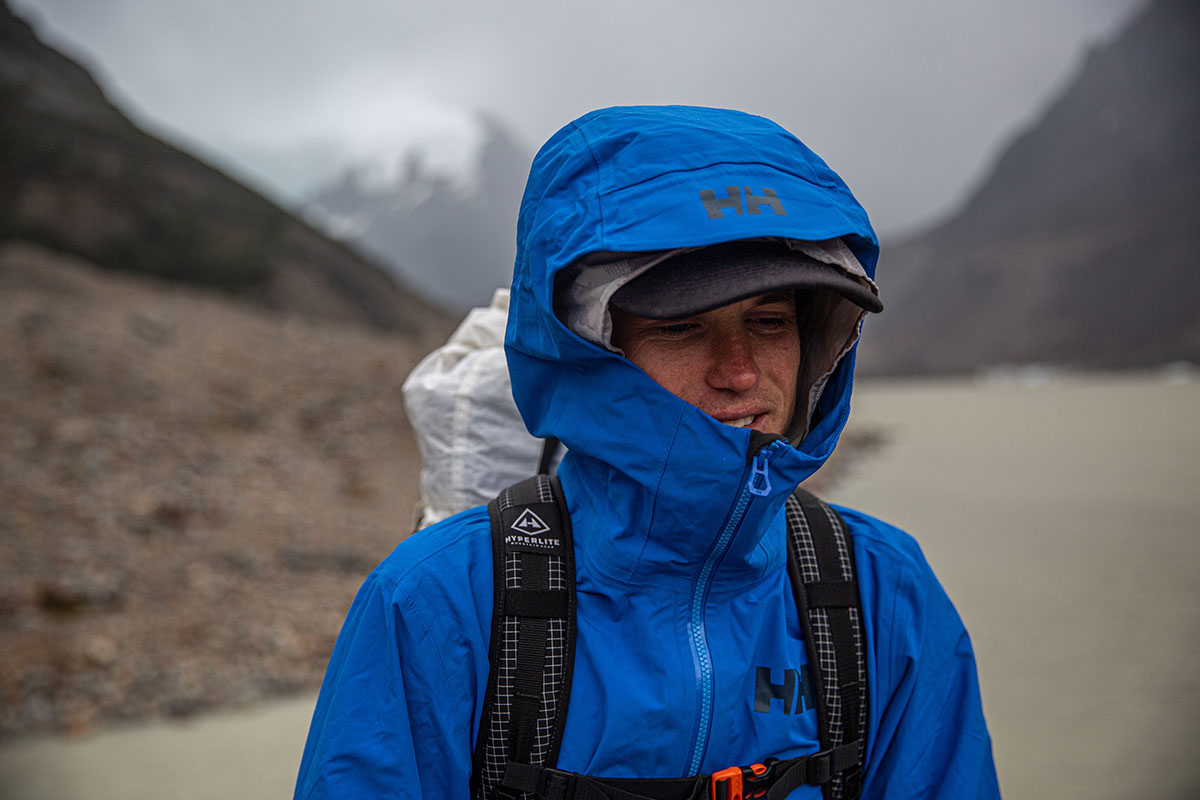
At 1 pound 3.4 ounces for the men’s version, the Blaze 3 Layer Shell Jacket is heavier than most comparable hardshell jackets. For comparison, Arc’teryx’s similarly intentioned Beta LT Jacket is considerably lighter at 13.9 ounces, and even their Beta AR Jacket, which uses top-end waterproofing and comes well equipped for winter use, undercuts the Blaze by 3.4 ounces (for a sizable price jump). In fact, the only heavier design that made our best-of list this season is Helly Hansen’s own Odin 9 Worlds 3.0 (1 lb. 6.9 oz.), which is notably thicker and more protective than the Blaze.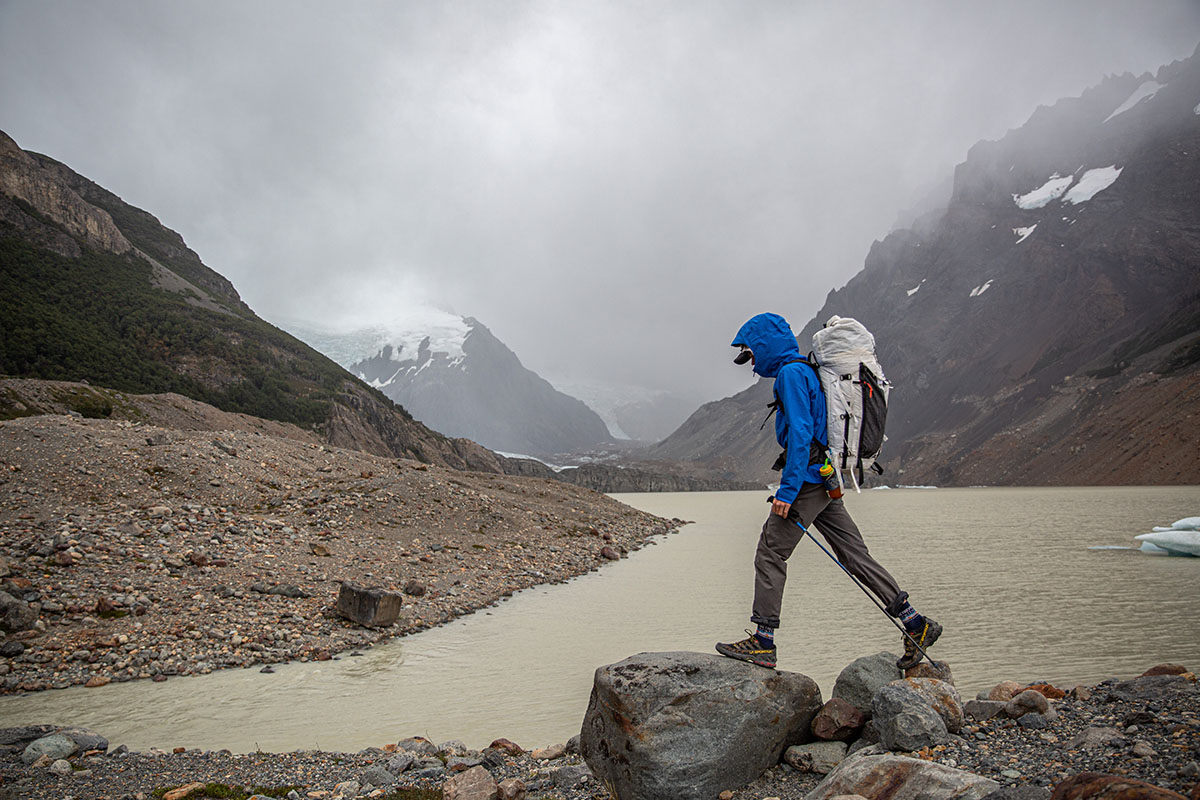
In line with its weight, the Blaze doesn’t pack down particularly small for storage. As I mentioned above, the design is noticeably less streamlined than competitors like Arc’teryx’s Beta LT or Norrøna’s Falketind Gore-Tex Jacket, and design choices like the oversized hood and fabric flaps over the pit zippers add bulk. In other words, it’s not the jacket I’d recommend for fast-and-light backcountry missions when space is at a premium. For these types of uses, there are plenty of lighter and more minimalist designs on the market—many of which offer comparable or even better protection than the Blaze.
The Blaze sticks to the basics in terms of features. Starting with the hood, the design is very large and easily fits over both climbing and ski helmets. It also paired well over the hood of my midlayer while backpacking without any uncomfortable bunching. There’s only one drawcord at the rear for adjusting fit—competitors like the Beta LT have two more toggles at the front for fine-tuning the aperture—but it’s not a dealbreaker by any means. And the nicely sized brim does a good job of deflecting moisture away from the face.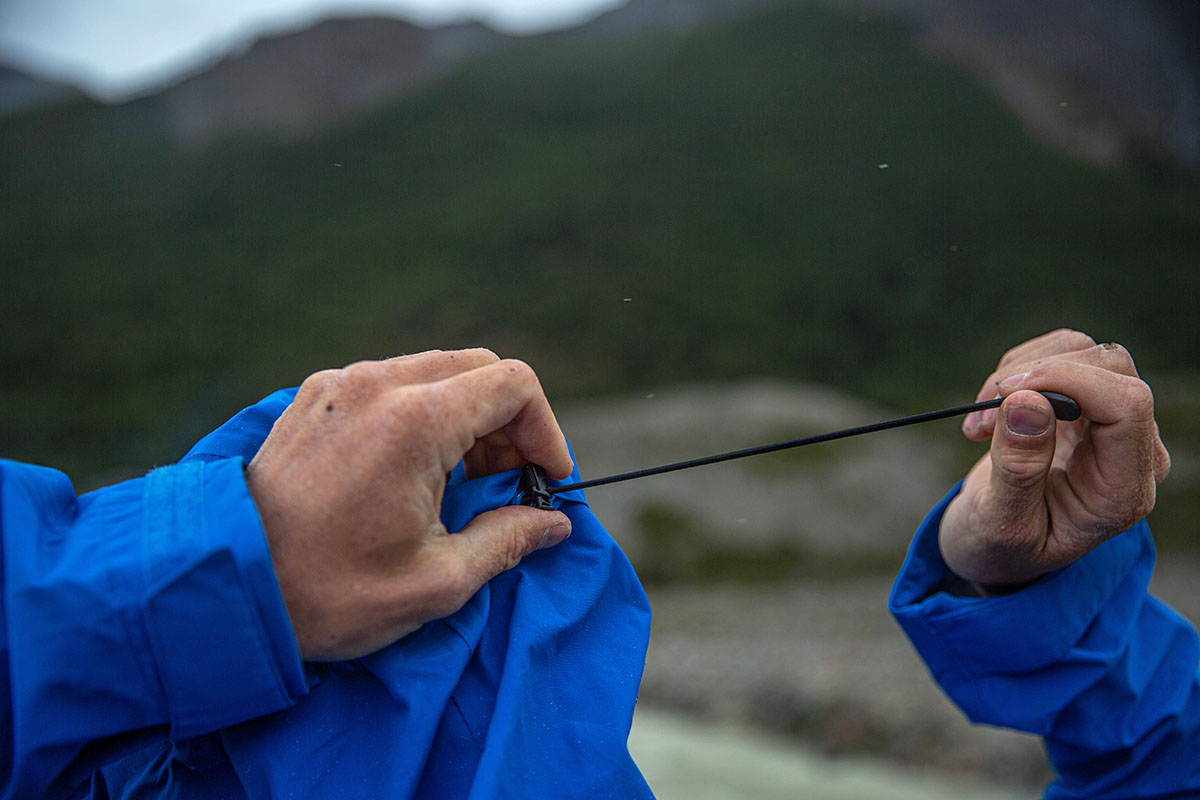
Moving on to storage, you get two hand pockets that are generously sized and positioned high enough to remain accessible underneath a backpack hipbelt or climbing harness. They also boast water-resistant zippers for added assurance in inclement weather. I wish Helly Hansen had included at least one more pocket to stash valuables without sacrificing security—if you store your phone in one of the hand pockets, there’s potential for it to fall out when warming cold hands. The rest of the feature set is equally minimalist: The pit zips forgo two-way zippers and use bulky fabric flaps to protect the openings, and the hem has just one drawcord for dialing in fit. To be sure, I personally found the Blaze’s simplistic layout to be entirely functional, but the fact that it outweighs most competitors without any added features is a notable downside.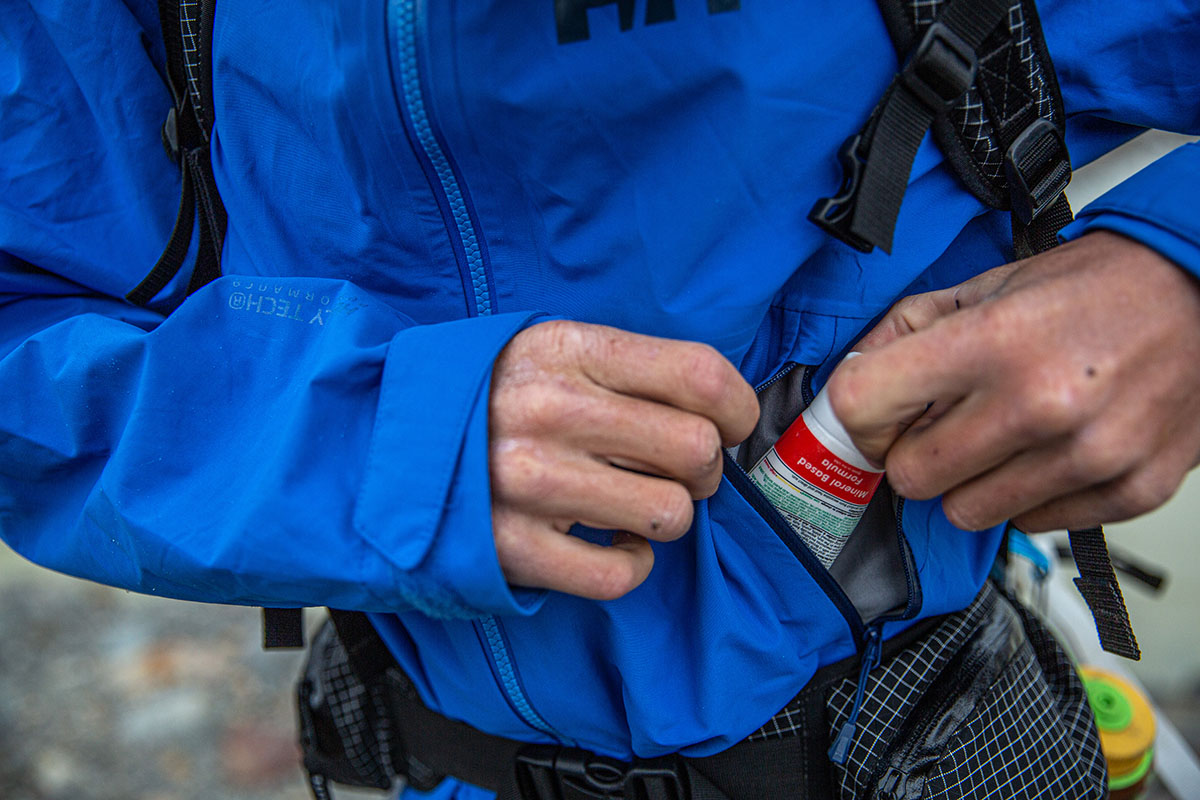
Previous Helly Hansen jackets I've worn ran a little small, so I opted for a men’s large in the Blaze 3 Layer Jacket rather than my usual size medium (sizing up isn’t uncommon for me due to my tall build). While fairly baggy, I was happy to find that the jacket moved well and didn’t feel overly bulky when backpacking, which is a complaint I had with the even-baggier Odin 9 Worlds 3.0. It also allowed for generous layering underneath, as well as excellent all-around coverage—the cuffs reached the backs of my hands, while the hem was long enough to protect my backside when sitting down or bending over. Those looking for a more athletic and streamlined cut will almost certainly want to size down, but I nevertheless appreciated the unrestricted mobility and option to layer heavily underneath. 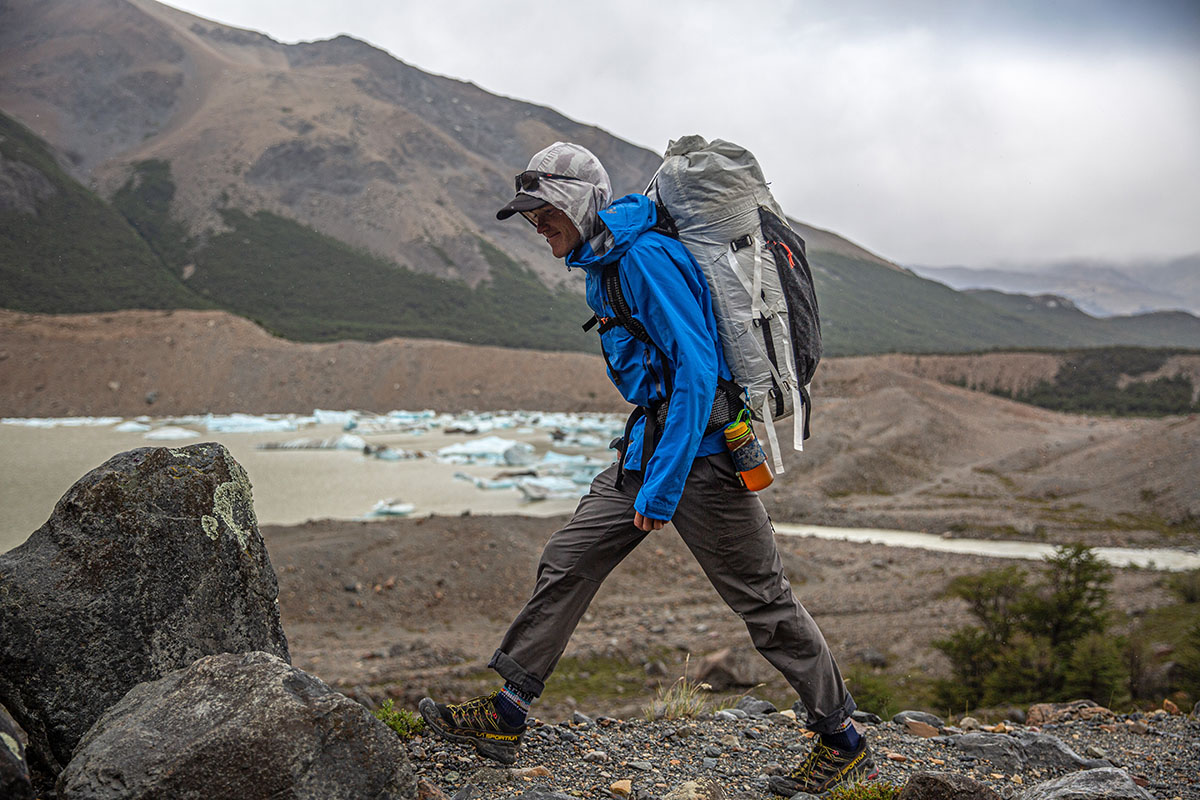
Many leading outdoor brands have begun incorporating sustainable production practices like recycled fabrics, and Helly Hansen is no exception. In this case, the Blaze’s shell is 68% recycled and made from ocean-sourced plastics (for more, here's a breakdown of their Ocean Bound Materials). It also uses a PFC-free DWR finish, which forgoes the use of per- or polyfluorinated chemicals—"forever chemicals" known to be harmful to the environment. Finally, the jacket is bluesign-approved, which means it meets strict safety and environmental standards and has been deemed safe for consumers, workers, and the environment.
We tested the men’s Blaze jacket for this review, and Helly Hansen offers a women’s version for the same price. Comparing the two, the women’s Blaze Jacket checks in a little lighter at 1 pound 1.6 ounces, comes in a single black colorway, and is offered in sizes from XS to XL (the men’s jacket comes in S to 2XL) but retains an otherwise identical feature set and overall build. To complete your kit, Helly Hansen sells the Blaze 3 Layer Shell Pants for $280, which share the same waterproof membrane. Zooming out to the wider Blaze collection, there are softshell pants and shorts for men and women, along with women’s-specific hiking tights (none of these final options are waterproof).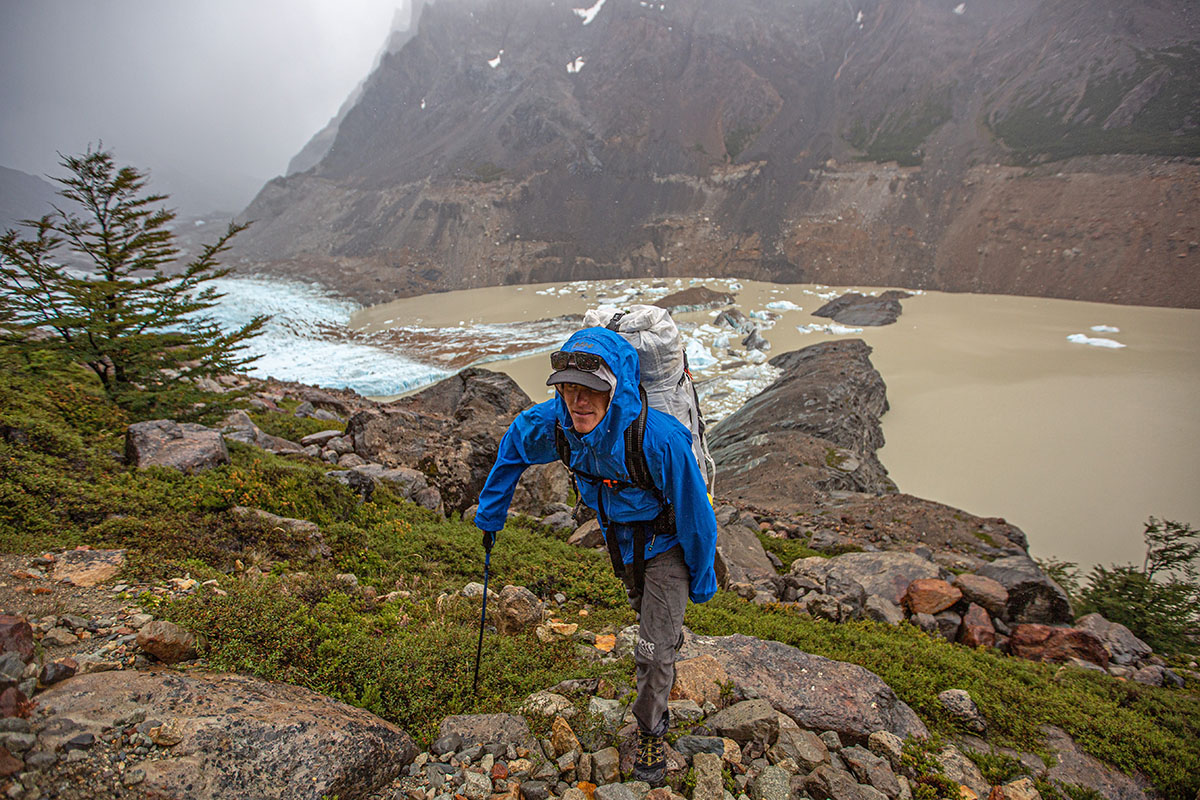
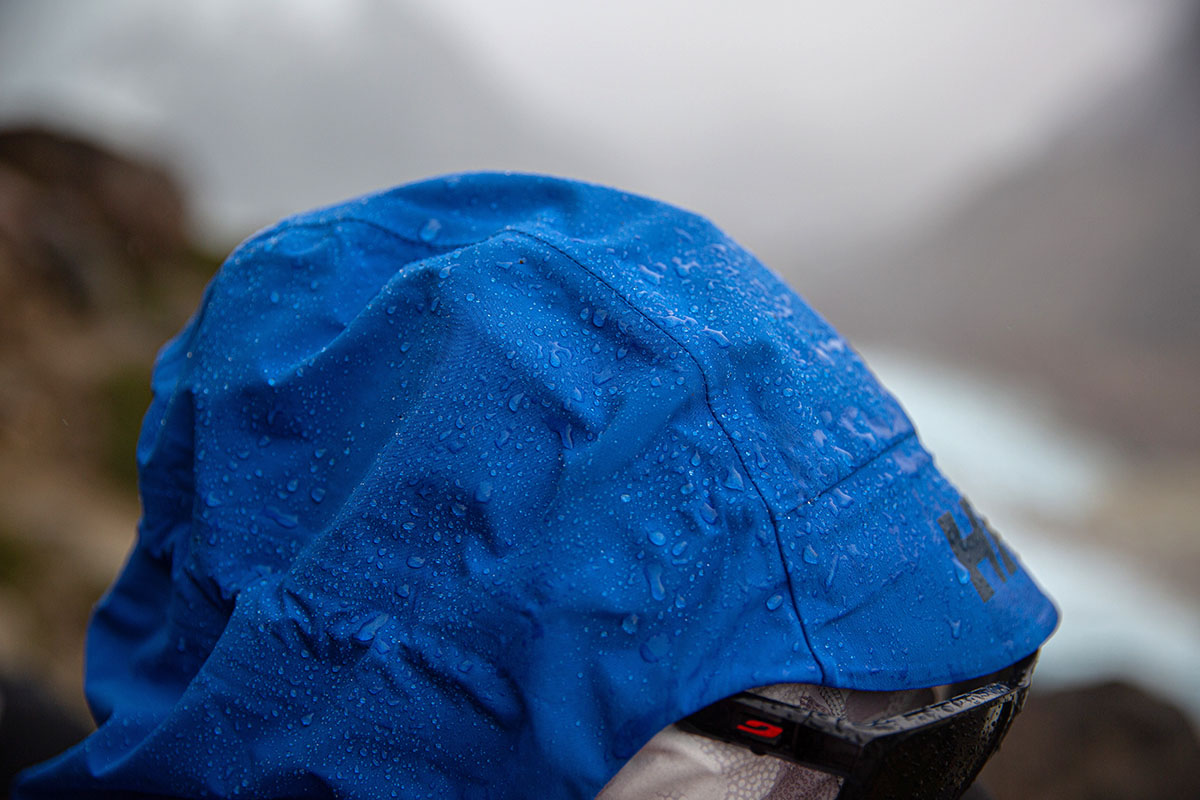
| Jacket | Price | Weight | Waterproofing | Denier | Pit Zips | Pockets |
|---|---|---|---|---|---|---|
| Helly Hansen Blaze | $375 | 1 lb. 3.4 oz. | 3L Helly Tech Performance | Unavail. | Yes | 2 |
| Arc’teryx Beta LT Jacket | $450 | 13.9 oz. | 3L Gore-Tex | 40D | Yes | 2 |
| Patagonia Granite Crest | $279 | 14.1 oz. | 3L H2No | 30D | Yes | 3 |
| Rab Kangri GTX | $425 | 1 lb. 2.5 oz. | 3L Gore-Tex | 70D | Yes | 2 |
| Helly Hansen Odin 9 Worlds | $475 | 1 lb. 6.9 oz. | 3L Helly Tech Pro | 70D | Yes | 3 |
The Blaze is a simple but functional hardshell jacket for activities from shoulder-season backpacking to short winter ski tours, but it’s on the heavier end and not the most reliable option in harsh weather. For a step up in all-around performance, we prefer Arc’teryx’s Beta LT Jacket, which checks in 5.5 ounces lighter than the Blaze, boasts upgraded Gore-Tex waterproofing, and has a decidedly sleeker and more streamlined appearance. It also includes additional features like three drawcords for tweaking the fit of the hood (the Blaze has one), dual hem adjustments, and RS (short for “Rain Shield”) zipper sliders that seal out moisture while minimizing bulk. Like most Arc’teryx designs, the Beta LT doesn’t come cheap at $450, and the trim fit makes it harder to layer heavily underneath, but avid backcountry-goers will likely find those trade-offs worth the upgrades in protection and features—not to mention the drop in weight.
At a more palatable price point, Patagonia’s $279 Granite Crest Jacket is a nice alternative for three-season uses from hiking and climbing to bike commuting. For waterproofing, Patagonia opted for their 3-layer H2No Performance Standard membrane that showed no signs of weakness throughout testing (in similarly challenging conditions to those the Blaze faced). Inside, Patagonia added a soft and supple jersey backer for added breathability, comfort, and mobility—all while keeping weight much lower at 14.1 ounces. The Blaze is the more capable winter design with a thicker and burlier exterior, but the Patagonia is a quality lightweight rain shell at a solid value.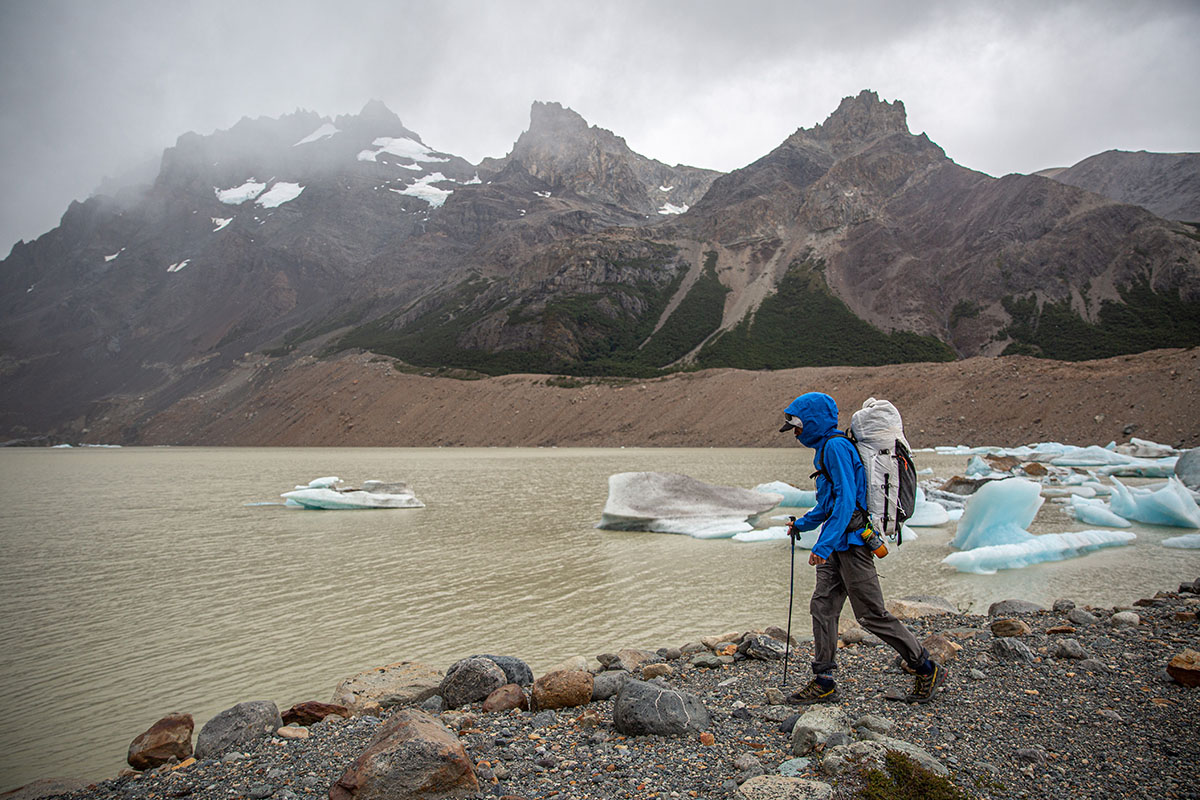
Another design we had with us in Patagonia was Rab’s Kangri GTX. For $50 more than the Blaze, the Kangri is notably thicker and more durable, fares better in inclement weather with a proven Gore-Tex construction, and tacks on handy extras like a two-way main zipper, two-way pit zips, and three drawcords for fine-tuning the fit of the hood. Neither jacket is particularly light, but the Rab does undercut the Blaze by around an ounce while retaining ample coverage for winter activities like backcountry skiing, mountaineering, snowshoeing, or even around-town use. Combined with the more streamlined appearance and wider colorway selection, we think the Kangri will be more appealing to most.
Finally, for demanding mountain objectives in winter, Helly Hansen’s own Odin 9 Worlds 3.0 Jacket offers several advantages over the Blaze. As I covered above, the Odin’s upgraded Helly Tech Professional membrane is more adept at fending off heavy and sustained moisture, and the outer shell is notably thicker and more confidence-inspiring. The storage layout is an improvement, too: The Odin’s hand pockets are considerably larger for stashing bulky items like climbing skins or goggles, and you also get an exterior chest pocket for stashing your phone or other small valuables. The biggest drawback is weight: At 1 pound 6.9 ounces, the Odin is decidedly hefty and overkill for most non-winter activities. If year-round versatility is the goal, the lighter Blaze will get the job done for less. But from a performance standpoint, the Odin is far and away the more capable hardshell (for more, see our in-depth Odin 9 Worlds review).